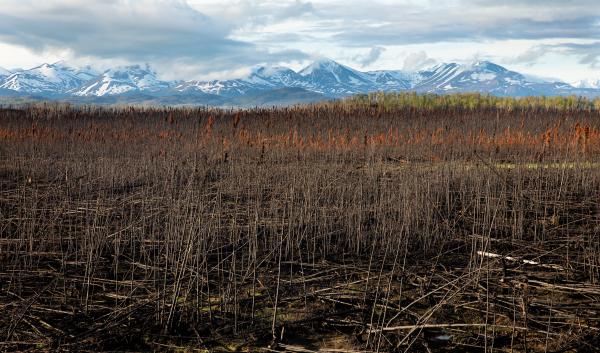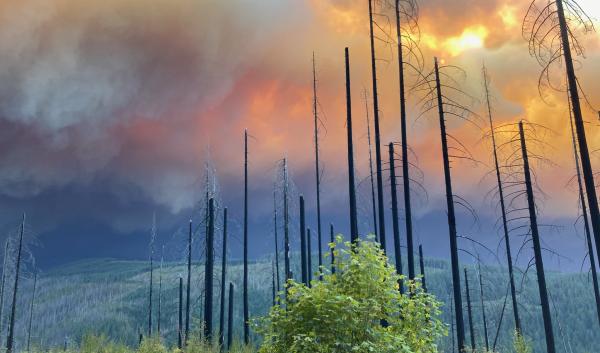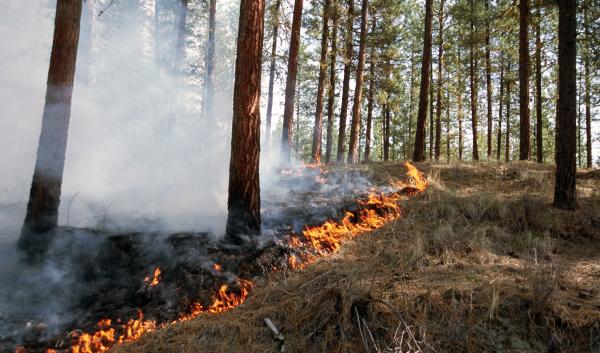Estimated reading time: 6 minutes
Climate Change and Wildfire — How Mechanical Fuel Treatments Can Improve Resilience
Climate change has the potential to increase wildfire risks in the Northwest. Drought and higher temperatures can dry out forest fuels (dead and live vegetation), increasing the number of days during which high-intensity wildfires can burn. If fires become more frequent and widespread, even trees that are adapted to drought and frequent fire may experience dieback and elevated mortality, especially when crown fires occur. Secondary stressors may also increase, such as insect outbreaks, some pathogens, and invasive non-native plant species. A combination of stressors (sometimes called a stress complex) will likely alter the distribution and abundance of some native species across large landscapes in the region.
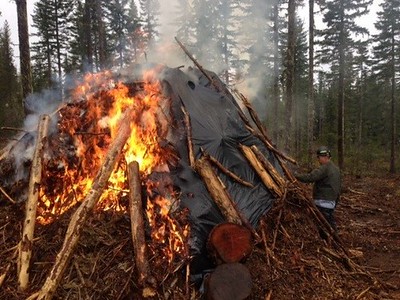
Many decades of fire exclusion in dry forests in the western United States have created conditions that contrast with previous conditions when wildfires were relatively frequent. In the absence of fire, these forests have high fuel loadings with dense stands, extensive understory growth, and elevated surface fuels. Now, when fires do occur, the risk of a crown fire is much higher, potentially leading to large fires.
Large wildfires have been increasing in the western United States. Between 2008 and 2012, only 26% of land that would have historically burned experienced mechanical fuel treatments, leaving a large backlog of forested areas untreated. In addition to the effects of fire, high-density forests become stressed from inter-tree competition, leading to reduced growth and vigor, as well as lower resilience to warmer, drier summers.
Elevated fuel loadings on the forest floor (especially fine fuels, less than 3 inches diameter) contribute most of the energy to large wildfires. In a warmer climate, these fuels will be drier for longer periods of time, providing more opportunities for both lightning- and human-caused ignitions. High fuel loadings contribute to high-intensity fires that spread rapidly. This makes fires difficult to suppress, potentially threatening communities and causing undesirable ecological effects.
Mechanical Fuel Treatments
Vegetation treatments that remove fuels reduce the likelihood of high-intensity wildfires, improve ecological conditions, and increase resilience to climate change impacts across dry-forest landscapes in Alaska, Idaho, Oregon, and Washington. Two steps are typically involved in vegetation treatments focused on fuel reduction. First, if stem density is high, smaller trees are removed (thinning) to reduce the connectivity of live fuels between trees and between the ground and canopy. Second, fuels are removed from the forest floor (including slash from thinning) to reduce the energy available for a wildfire. Although this second step is commonly done with prescribed fire, mechanical fuel treatments are also used.
Mechanical fuel treatments are generally safe, effective, and consistent in removing fuels and reducing the risk of high-intensity wildfires. Mechanical treatments can be implemented nearly year-round with minimal risk to people and infrastructure. In contrast, prescribed fires can be implemented only under a relatively narrow range of weather conditions that minimize risk of escape and minimize smoke dispersion into local communities. In addition, mechanical treatments can be targeted to remove a specific amount of fuels, whereas fuel removal by prescribed fire can be patchy across a large landscape. As climate change increases the number of high fire-danger days across the region, mechanical fuel treatments may be a safer and more effective option for reducing fuels, especially in and near the wildland-urban interface.
The primary types of mechanical fuel treatments are:
- Fuel piling involves collecting woody biomass and forming piles to dry out prior to being burned. Piles are made after mechanical treatments have occurred and can be formed either by hand or with machinery. To burn, wood must be sufficiently dry, and weather conditions must be safe for small fires with limited smoke dispersal. Alternatively, piles can be formed and used for the benefit of wildlife habitat, or the woody biomass can be removed from the site. Fuel piles can also be added to a kiln to make biochar.
- Fuel breaks are blocks or strips of forested areas in which the vegetation has been reduced or moved off-site to slow the spread of wildfire, making it easier to suppress.
- Mastication (also called mulching) is an understory treatment in which machinery is used to grind up fuels. Mastication redistributes ladder fuels (fuels that allow fire to move up from the forest floor to the canopy). This can reduce fire intensity and crown fire potential.
In some cases, mechanical fuel treatments can be performed in conjunction with prescribed burns. These planned, low-intensity fires remove fine fuels from the forest floor and help mimic the low-frequency, low-intensity fire regime of dry forests that would occur without fire suppression. A good example of a combined treatment is the mechanical removal of small trees and scattering of smaller branches (slash) across the forest floor, followed by prescribed fire. Selection of fuel treatment technique—mechanical, prescribed fire, or a combination of the two—depends on local site conditions, management objectives, and available personnel and funding.
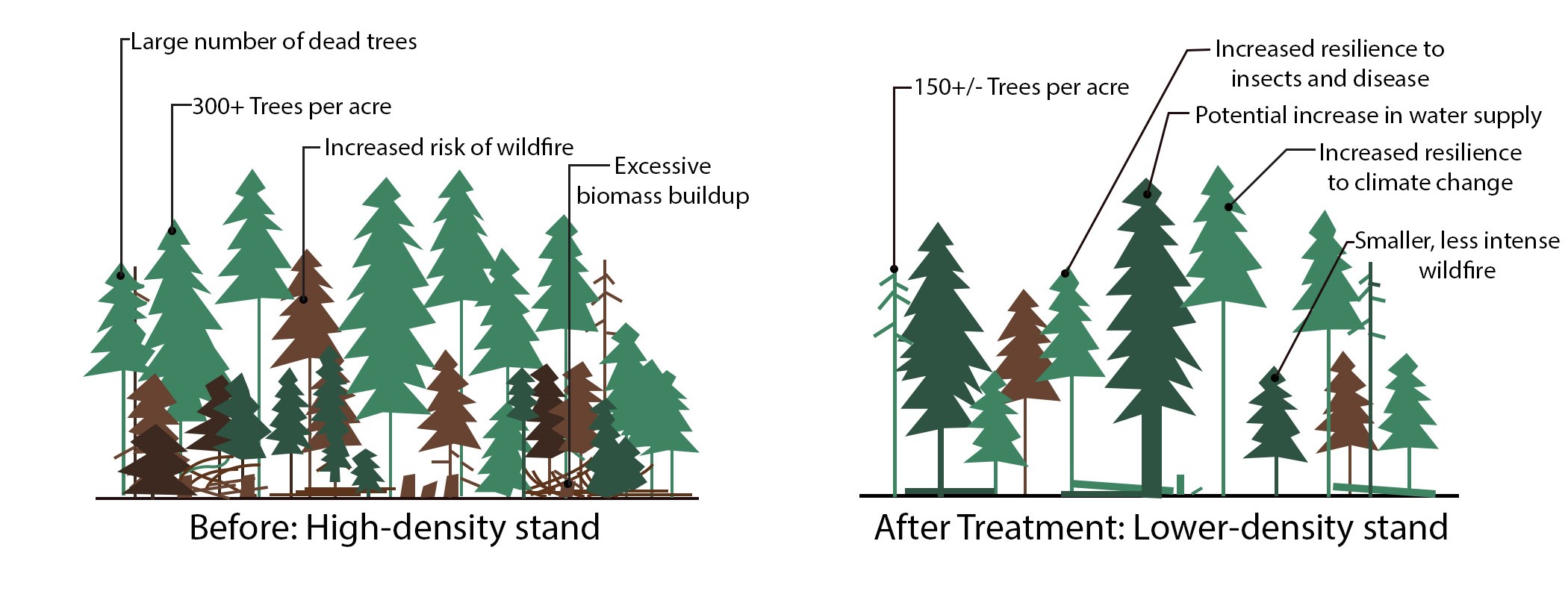
Benefits of Mechanical Fuel Treatments for Communities
Urban sprawl has created thinner boundaries between human settlement and forested areas, known as the wildland-urban interface (WUI). Most wildfires today are ignited by human-influenced sources. Mechanical fuel treatments can create the conditions necessary to help protect human communities from wildfire, as well as improve adjacent forests and animal habitats. As more communities look to nature for mental and physical wellness, fuel treatments can reduce the negative effects of wildfire on both human and ecological values.
Fuel treatments offer an additional connection with communities, providing an opportunity to learn about the role of fire in nearby forest ecosystems. This can in turn help residents in the WUI advocate for fuel treatments and collaborate with local agencies in planning and education. Stewardship opportunities can lead to more employment and natural resource jobs. This can be especially valuable in underserved communities that may be susceptible to climate change impacts if they lack the funding and consideration needed to participate in natural resource planning and policy development. Fuel treatments can open a door to opportunities for education, dialogue, and employment, thereby involving underserved residents in decision making about resource management.
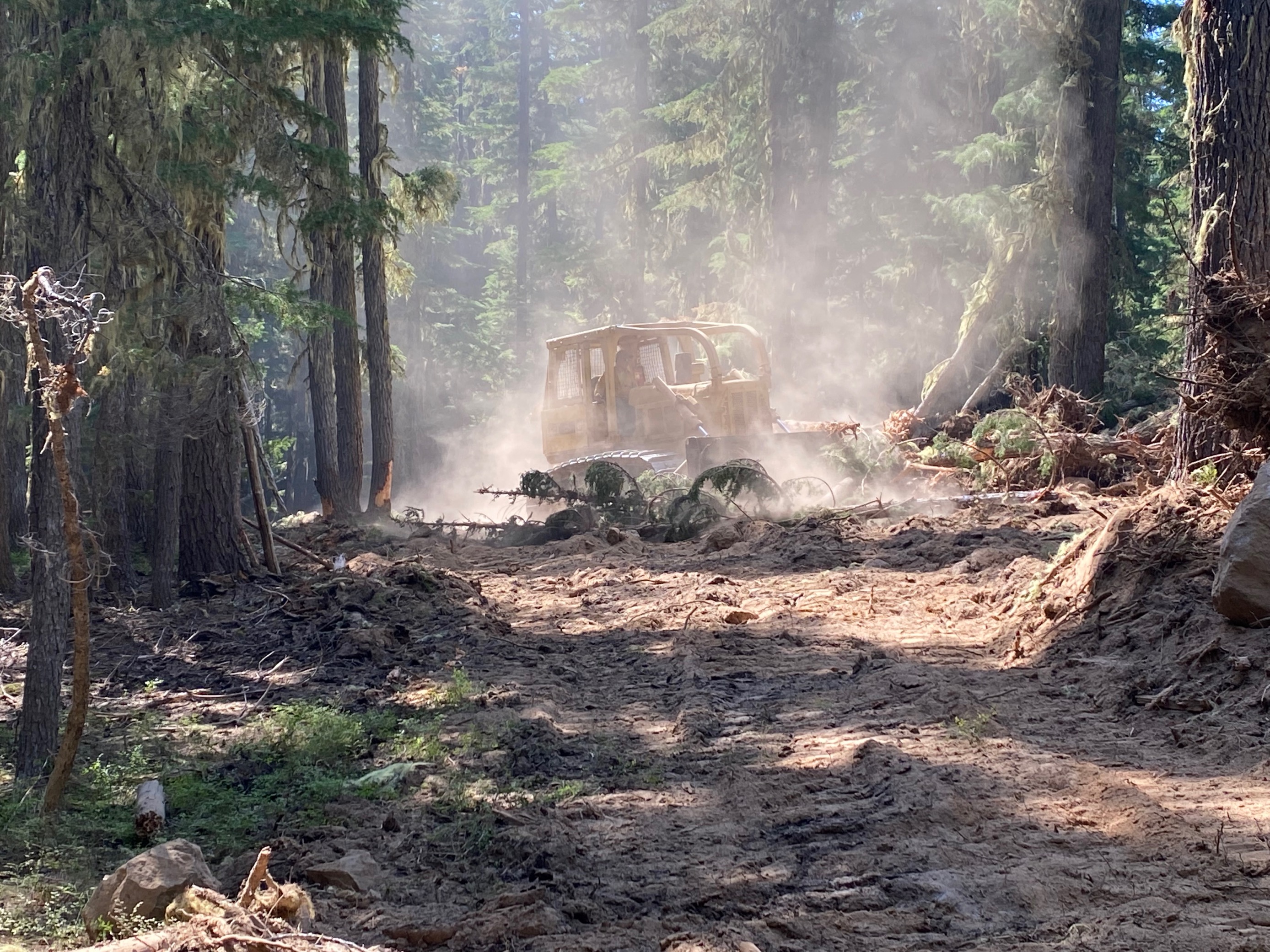
The Future with Fuel Treatments
The U.S. Forest Service recently implemented a 10-year strategy aimed at vegetation and fuel management nationwide. The strategy prioritizes treatments in large land areas (known as firesheds) with high fuel loadings and wildfire risk, with the objective of reducing fire risk, promoting healthier forests, and developing fire-ready communities. Treatment options and assistance are provided to landowners and resource managers to create efficient and cost-effective change. Washington and Oregon, which contain extensive areas with high wildfire risk, are two of the four states for which treatment plans will first be developed. Long-term sustainability of the treatments is a priority, well beyond the initial 10-year goal. It will be especially important to maintain resilient forests and communities as temperature and drought frequency increase in the future. Assertive treatments and timely action will improve the health and resilience of both people and forests in the Northwest.
In the wake of climate change, mechanical fuel treatments are a step in the right direction for public and private landowners and neighboring communities. Dry forest ecosystems benefit from these treatments, which reduce the risk of high-intensity fires and increase resilience to climate change.
Additional Resources:
-
Climate Change and Wildfire in Alaska
In Alaska, the risk of large, frequent, and severe wildfires is increasing as rapidly warming temperatures and longer growing seasons alter forest and tundra…
-
Climate Change and Wildfire in Idaho, Oregon, and Washington
Large fires in Idaho, Oregon, and Washington are associated with warm and dry conditions that are likely to increase with climate change.
-
Prescribed Fire in the Northwest
Advantages and disadvantages of prescribed fire in the northwest and the process of conducting a prescribed fire.


